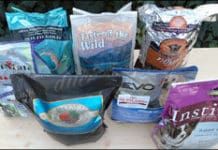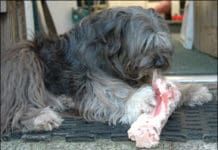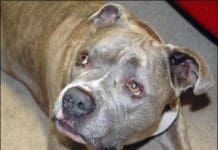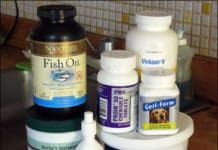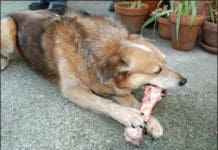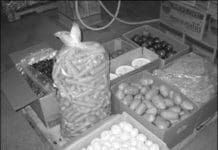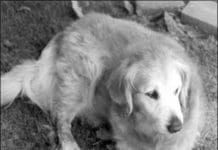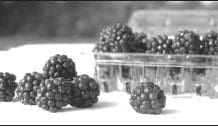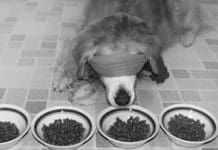Whole Dog Journal’s 2008 Approved Grain-Free Dry Dog Foods
Last month's issue contained our annual review of dry dog foods, but with an exception from our usual format: This year, we decided to break out grain-free dry dog foods from the increasingly populated and competitive pack of terrific kibbled products on the market. We did not review them in the February issue, but will discuss grain-free foods at length here. In 2005, Natura Pet Products was the first pet food company to manufacture and market a grain-free kibble, which was initially called Innova Evo (and is now called simply Evo). The success of the product, in the market and with many of the dogs fed the diet, sparked a proliferation of grain-free foods. We were able to find more than a dozen companies that currently offer one or more grain-free foods that meet our selection criteria.
Top Quality Dog Treats
While a dog treat should be something special for the dog, it shouldn't undermine his health, or counter the positive effects of a healthy diet. Artificial preservatives and colors can cause cancer. Too many sweets can contribute to the development of diabetes; fatty treats can trigger an attack of pancreatitis. And an excess of treats can pose serious problems. It can spoil the dog's appetite for healthier, nutritionally complete and balanced foods. If the treats contain ingredients to which the dog is allergic or intolerant, an excessive allotment can trigger a dramatic reaction. And, of course, a chronic excess of treats can cause obesity, which contributes to many other disease processes.
A Homemade Dog Food Diet
As more and more owners make the decision to switch their dogs to homemade diets, we grew increasingly aware of the importance and urgency to supply appropriate guidelines that could help people create homemade diets that would meet their dogs' nutritional needs. Over the past five months, we've presented information on homemade diets, cooked and raw, with whole bones, ground bones, or boneless. During that time, we've learned about some new products, read a great new book, tried out some sample pre-mixes and freeze-dried foods, and responded to questions from people about issues raised in our past five articles and points that would benefit from clarification. We'll discuss these topics in this final installment of our series.
Raw Dog Food Diet Recipes
Feeding a raw dog food diet to your dog is quite simple, especially once you have a system in place. Though like anything else new, it can seem very complicated when first starting out. These sample dog food diets should be helpful to dog caretakers who are considering feeding a raw diet. Even those who have been doing it for a while may learn some new tricks to make the process of finding, preparing, and storing home prepared dog food simpler.
Home Prepared Dog Food Recipes
Over the past three months, weve provided rules and guidelines for feeding a homemade dog food diet, but getting started can still seem overwhelming. This month, well hear from owners who feed their dogs a homemade diet, and learn from them how they go about it, including tips and tricks for finding, preparing, and storing the dog food.
Home-Prepared Pet Food Diets
Those of us who feed our dogs a raw diet that includes bones believe that this is the healthiest, most natural diet dogs can eat. But not everyone is comfortable feeding such a diet to their dogs. Here are directions for feeding your dog a cooked diet, or a diet that includes raw meat but no bones. Your dog will still benefit from a variety of fresh foods in proper proportions, regardless of how theyfre prepared. It takes a little more work to ensure that a cooked diet that does not include bone meets all of your dogfs nutritional needs. Wefll explain how much calcium, and in which form, youfll need to add to his diet.
Home-Prepared Dog Food
including ground meat
Pet Food Manufacturing Plants
Not long ago, I was talking with Jay Weinstein, professional chef and editor of Kitchen & Cook, another one of Belvoir Publications of magazines, at a meeting with our publisher in Florida. Weinstein asked me where I had flown in from. I told him I had attended a pet products show in Chicago, and was touring some dog food factories on the trip, as well. Ugh! Jay protested, his fine dining sensibilities temporarily offended. Why do they have to be called dog food factories? Why can't they be called dog food kitchens, at least? Or pet nutrition facilities?
Diet and the Older Dog
We all want our dogs to enjoy the highest quality of life for the longest possible time. Proper diet, adequate exercise, weight control, appropriate supplements, and good veterinary care can all help our dogs remain active and vibrant well into their senior years.
Dog Antioxidants: Canines Benefit from Antioxidants Too!
Antioxidants are all the rage nowadays, seemingly good for anything that ails you or your dog. Antioxidants, natural and otherwise, are also widely used as preservatives in processed foods for pets and their people. Antioxidants are, however, another of those things that the more the scientists learn about them, the more they learn they don't know. This paradigm seems to repeat itself in the realm of holistic health!
How to Choose the Right Dog Food
No one is in a better position than you are to decide which food you should feed your dog. That may not be what you wanted to hear. You may have been hoping that someone would reveal to you the name of the world's healthiest food, so you could just buy that and have it done with.







